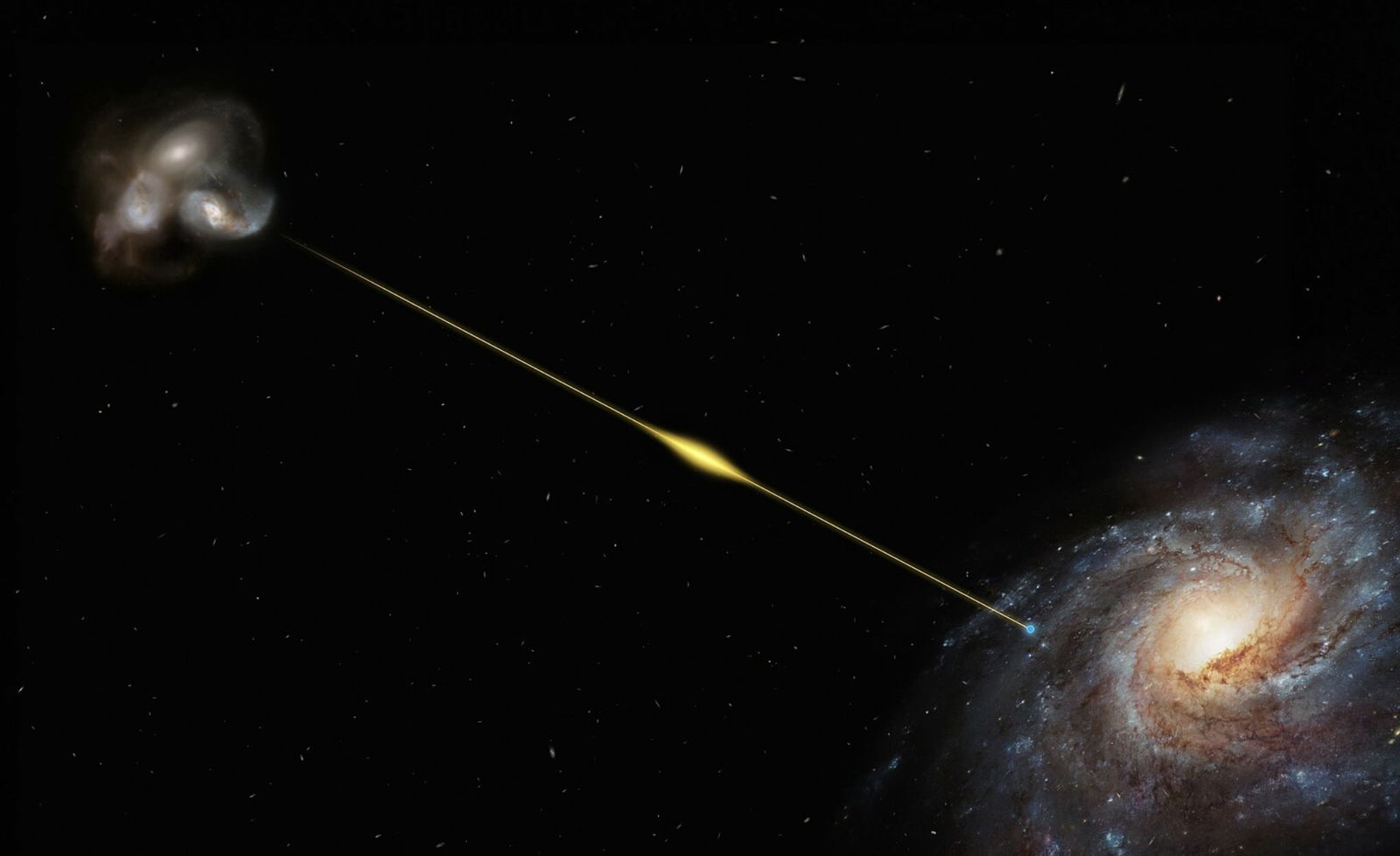The weakest persistent radio emission ever recorded involving Fast Radio Bursts (FRB) has now been detected, according to new findings that are bringing astronomers closer than ever to understanding these mysterious cosmic radio pulses.
The phenomenon has puzzled astronomers since West Virginia University Professor Duncan Lorimer first detected the distant, millisecond-long bursts in 2007. Since then, theories about their origin have ranged from possible communications from an extraterrestrial civilization to so-called “star quakes.“
What are Fast Radio Bursts?
A fast radio burst (FRB) is a brief, powerful burst of radio waves that lasts from less than a millisecond to a few seconds. These bursts come from an unknown high-energy source in space and release as much energy in a millisecond as Earth’s Sun can produce in three days.
FRBs originate outside the Milky Way galaxy, increasing their mystery since they behave so differently from what astrophysicists observe locally. FRBs also release a great deal of energy, which makes them easy to detect.
There is a large gap between noticing one-offs and coming up with a solid explanation for the phenomenon. While most FRBs are singular events, a small handful repeat. These repeaters give researchers a known direction to look in and more data to test.
A New Discovery
The international team involved in the new findings, led by the Italian National Institute for Astrophysics (INAF), focused on a particular FRB called FRB20201124A, named for its 2020 date of discovery.
The weakest repeating FRB yet discovered, its origin lies 1.3 billion light-years from Earth. What makes it even more interesting is that it is one of only two FRBs known that is also paired with a persistent radio source of non-thermal origin.
The INAF team hypothesized that a plasma bubble exists at the origin of the FRB in question. This was tested by monitoring the FRB using the US-based Very Large Array (VLA), the most sensitive radio telescope in existence. Their results confirmed the theoretical prediction involving a plasma bubble.
“We were able to demonstrate through observations that the persistent emission observed along with some fast radio bursts behaves as expected from the nebular emission model, i.e., a ‘bubble’ of ionized gas that surrounds the central engine,” said lead author Gabriele Bruni in a statement.
“In particular, through radio observations of one of the bursts that are nearest to us, we were able to measure the weak persistent emission coming from the same location as the FRB, extending the radio flux range explored so far for these objects by two orders of magnitude,” Bruni added.
Data Streams Unravel the Source of Fast Radio Bursts
Data from the Northern Extended Millimeter Array (NOEMA) in France provided the team with crucial additional information, including the amount of dust required to track obscured star-forming regions. The Gran Telescopio Canarias (GranTeCan) in the Canary Islands also produced optical information to measure emission from ionized hydrogen.
“Optical observations were an important element to study the FRB region at a spatial resolution similar to that of radio observations,” said Co-author Eliana Palazzi. “Mapping hydrogen emission at such a great level of detail allowed us to derive the local star formation rate, which we found to be too low to justify continuous radio emission.”
Luigi Piro, also one of the study’s co-authors, provided additional details about the combination of information that shaped their discovery. “In this new work, we conducted a campaign at higher spatial resolution with the VLA,” he explained, adding that additional observations using data obtained from NOEMA and GranTeCan helped reconstruct the galaxy and helped reveal the presence of the FRB plasma bubble (appearing as a compact radio source) within in the star-forming region.
“In the meantime, the theoretical model on the nebula had also been published, allowing us to test its validity and, finally, to confirm the model itself,” Piro said.
Lingering Questions
Identifying the plasma bubble as the probable origin of the FRB raises questions about how the FRB is generated. The team hypothesizes that a cosmic wind may be is blowing against the plasma bubble to create the emission, with two possibilities offered as potential sources for the pressure: either it is produced by a highly magnetized neutron star, known as a magnetar, or a binary system comprised of a star, or a black hole is intensely accreting material from another stellar body.
While most FRBs do not show evidence of a linked persistent radio source, this may change in the future. A great deal of space separates FRB20201124A from Earth, but other FRBs are located even further off. Intriguingly, a very faint second persistent radio source was detected emanating from the same region. The data indicates that due to their faintness, such persistent radio sources may also accompany other FRBs, although their luminosity may cause them to be too faint to be easily detected.
The team’s new study, “A nebular origin for the persistent radio emission of fast radio bursts,” appeared in the journal Nature on August 7, 2024.
Ryan Whalen covers science and technology for The Debrief. He holds a BA in History and a Master of Library and Information Science with a certificate in Data Science. He can be contacted at ryan@thedebrief.org.

